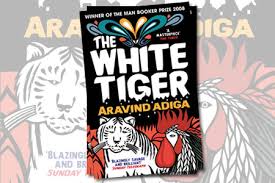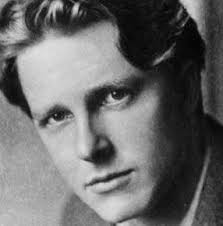The white Tiger by Arvind Adiga
Corruption
in India
Throughout Balram's narrative, Adiga constantly exposes the
prevalence of corruption throughout all of India's institutions. Schools,
hospitals, police, elections, industries and every aspect of government are
thoroughly corrupt, while practices such as bribery and fraud are entirely
commonplace. Balram's approach to this truth largely involves a deeply cynical
humor. However, there is an ugly component to his character arc. In order to
escape the "Darkness" and enter into the "Light," Balram
must himself become a part of this system. His victory is thus bittersweet;
while he has succeeded in elevating his social position, he continues to live
in a country paralyzed by corruption, which prevents true progress from taking
place. Adiga's ultimate point seems to be that corruption necessarily breeds
corruption, unless of course a greater revolution remakes society.
Globalization
The India described by Balram is in the throes of a major
transformation, heralded in part by the advent of globalization. India finds
itself at the crossroads of developments in the fields of technology and
outsourcing, as the nation adapts to address the needs of a global economy.
Balram recognizes and hopes to ride this wave of the future with his White
Tiger Technology Drivers business in Bangalore, but this force of globalization
has a darker component for him as well. It threatens and disenfranchises those
adhering to a traditional way of life, such as his family in Laxmangarh. Hence,
he must change who he is in order to compete in this new world. Adiga thus
vividly conjures the tension between the old and new India, suggesting that
succeeding in this world (as Balram does) requires a flurry of ethical and
personal compromises.
Social Mobility
Balram frequently discusses the issues of social mobility in the
new social hierarchy of India. Having idolized Vijay from
childhood, Balram recognizes the possibility of moving up in the world, but has
to confront the reality of such movement throughout his story. One of the big
issues is how India's social system has changed. Under the caste system,
people's fates were predetermined, but they were happy, believing they belonged
somewhere. However, the new social structure promises the possibility of social
mobility, but actually only offers two social divisions: the rich and the poor.
The poor are kept in an eternal state of subservience and servitude to the rich
by the mechanism that Balram dubs "The Rooster Coop." However, they
are now more unhappy because there is a possibility of social mobility that
nevertheless remains out of their grasp. Balram ultimately finds a way to break
from the Rooster Coop, but it requires him to compromise his ethics and
personality - he has to kill his master and betray his family. That social
mobility is a specter captured only through such difficult means is a comment
on the unfortunate reality of a world built more on limitations than
possibility.
Identity
The White Tiger is largely a story of
self-fashioning, as Balram undergoes a transformative journey to construct his
own identity. Inspired by his childhood hero, Vijay, who also rose from a
humble background to achieve success in the upper echelons of Indian society, Balram
dedicates himself to self-improvement, so much so that he is willing to destroy
who he once was. He sees identity as fluid and malleable, a fact articulated
through the many name changes he employs throughout the story. Ultimately, he
even chooses a new identity for himself in imitation of his master, calling
himself Ashok Sharma. And yet the novel is full of dramatic
irony revealing that Balram cannot fully repudiate the person he once was. He
remains full of unresolved guilt and provincial superstitions, reminding us
that while identity might be entirely fluid, it is also entirely immovable as
well.
Morality
Ultimately, The White Tiger is a tale about morality, suggesting
that morality can be viewed as either rigid or flexible. Balram eventually
embraces the latter option. In order to justify murdering Ashok and risking his
family's lives, Balram develops an alternate moral system. He reasons that the
money he steals from Ashok is rightfully his, since servants are exploited by
the rich, and he convinces himself of his exceptionalism as "the white
tiger" in order to rationalize his decisions. Believing he is the only one
who has truly woken up to the truth of the "Rooser Coop," he feels
compelled to change his life. In this sense, Balram has become a version of
Nietzche's "ubermensch," or over-man, who believes himself to be
above the moral and legal limitations of society. Adiga poses a question
through Balram: do we blame a criminal for his decisions, or do we try to
understand those decisions as reactions to an overly oppressive and restrictive
society? Assuming that a reader does not have a definitive answer, Adiga
suggests then that morality is a fluid and unfixed concept.
Pairs and Dualities
The White Tiger abounds with instances of twinned pairs and
dualities, each corresponding to one half of a central dichotomy: the rich and
the poor halves of India. Balram poses India as broken up into two sections,
the "Darkness" and the "Light." Examples of twinned pairs from
each of these two halves include: the "men with small bellies" and
"men with big bellies;" the hospital where Balram's father dies and
the city hospital visited by the Stork; the beautiful blonde prostitute visited by
Ashok and the uglier, faux-blonde prostitute hired by Balram; the apartment
building in Delhi and its servants quarters below; and the two versions of all
markets in India (one for the rich, and a smaller, grimier replica for the
servants). The most significant of these twinned pairs is, of course, Ashok and
Balram themselves. It is telling that Balram, the narrator, views the world as
split into halves. It reveals the extent to which oppression has ruined his
worldview.
Another means by which Adiga explores this
theme is through the symbolic rearview mirror, which doubles everything through
a reflection and hence functions as a conduit for the confrontation between
Ashok and Balram. This particular image suggests that identity can be
transferred across the divide - one can move from one area to another. Other
instances of dualities in the text serve to further highlight the extent of
Balram's transformation; for example, the two car accidents (Pinky Madam's hit-and-run and the death of the
bicycling boy) demonstrate just how far Balram has come in his quest to become
a successful entrepreneur. Balram was once a pawn in the game, whereas in the
latter case he has found the power to be a representative of the more fortunate
"Light."
Family
The extended Indian family plays an
incredibly significant role in the traditional way of life in the Darkness. The
family is the core social unit, so all its members are expected to act with
selfless devotion to its interests. Though the poor ostensibly view this construct
as a strength, Balram comes to see it as another way through which the poor are
kept in the "Rooster Coop." Firstly, the expectations of family
enforce limitations that can quash individual ambition (as they almost do with
Balram). Further, since a servant's disobedience is visited upon his family,
servants remain trapped by the whims of their masters. Social mobility becomes
impossible. In order to break free and live the life of a successful
entrepreneur in Bangalore, a city representing a new India, Balram must
sacrifice his family. This conundrum seems to suggest that in order to thrive
in the modern world and
embrace the potentials of a New India, this traditional attachment to the
family must be relinquished in favor of a newfound emphasis on individualism.




Comments
Post a Comment